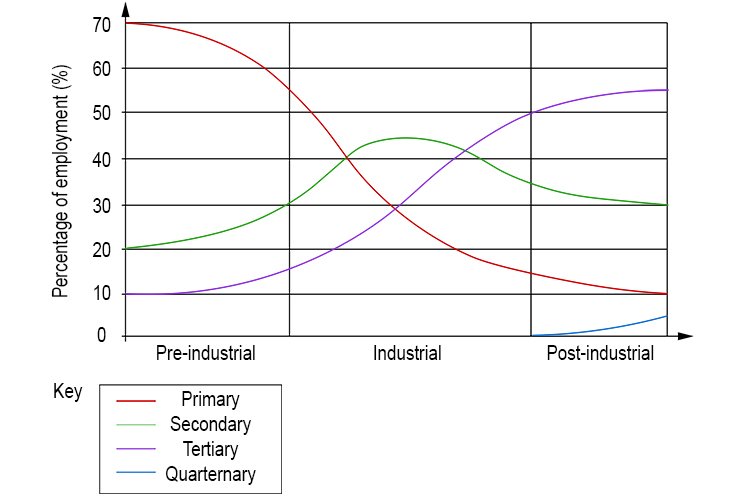Classifying Industry Introduction
There are four ways to classify industry: primary, secondary, tertiary and quaternary.
Primary Industry
A business that extracts the earth’s raw natural resources, such as mining quarries, fishing, forestry and farming.
Secondary Industry
Manufacturing and assembly companies. They take raw materials and manufacture finished products out of them. This includes construction companies, utility companies (because they transform raw materials to produce a usable outlet for the consumer), food and beverage processing products, and clothing and textile manufacturing.
Tertiary Industry
Providing a service which includes EITHER doing something with the manufactured product such as selling, repairing, fitting the goods and delivering OR doing something for a consumer such as gardening, cutting hair, preparing a meal and providing entertainment.
Quaternary Industry
Information-based services offering highly skilled technical knowledge. This includes computer services, education, legal services, financial services and research and development.
The percentage of the population of a country working in these four divisions changes as the country develops. A less developed country would have a much large percentage in the primary sector, whereas a developed country would have a much higher percentage of their workforce in the services sector.
The importance of the different industry sectors changes in countries at different levels of development over time and can be shown in this typical changing employment structure graph below:

For example, in the year 2000, these were the following industry classification:

You can see how a developed country has over 70% of its industry in the service sector whereas, in an undeveloped country, it can be less than 10%.




